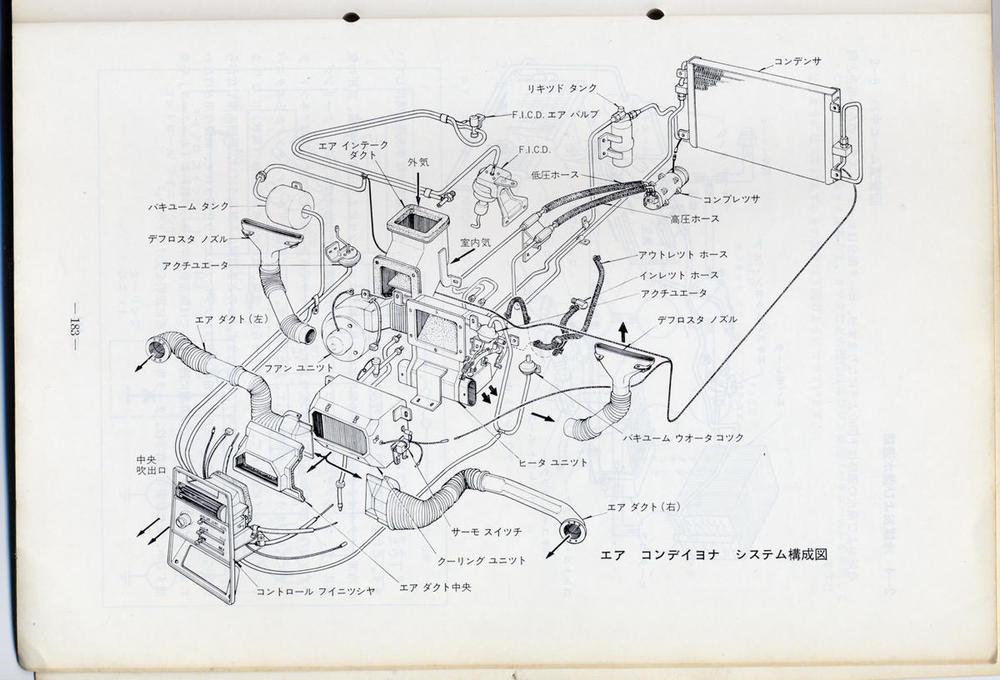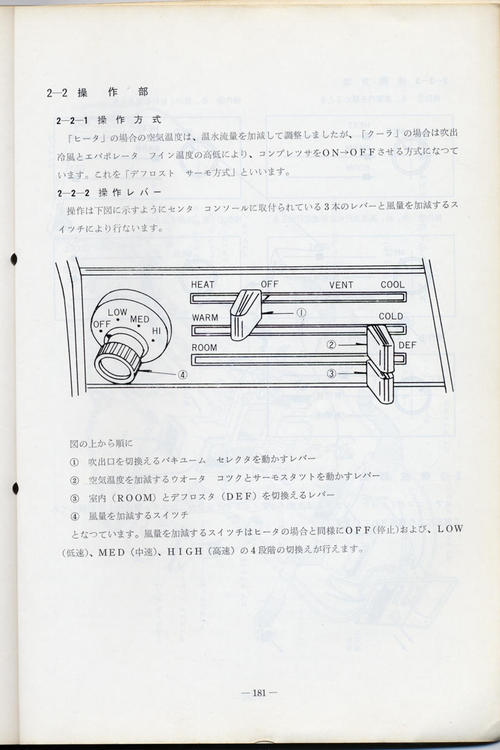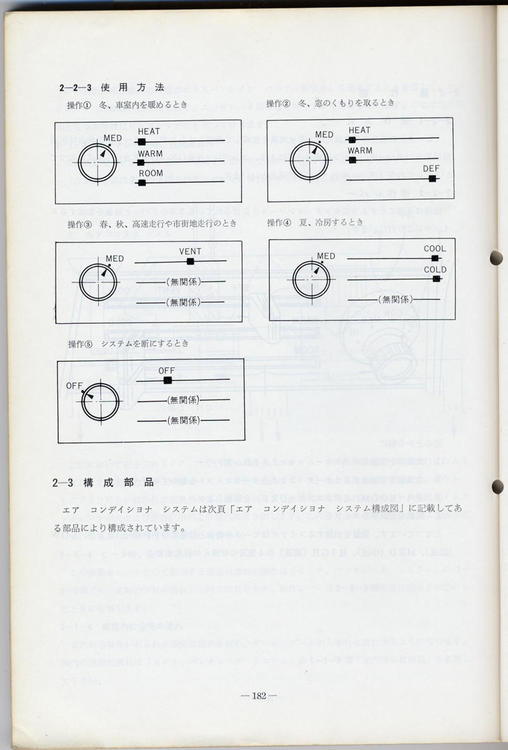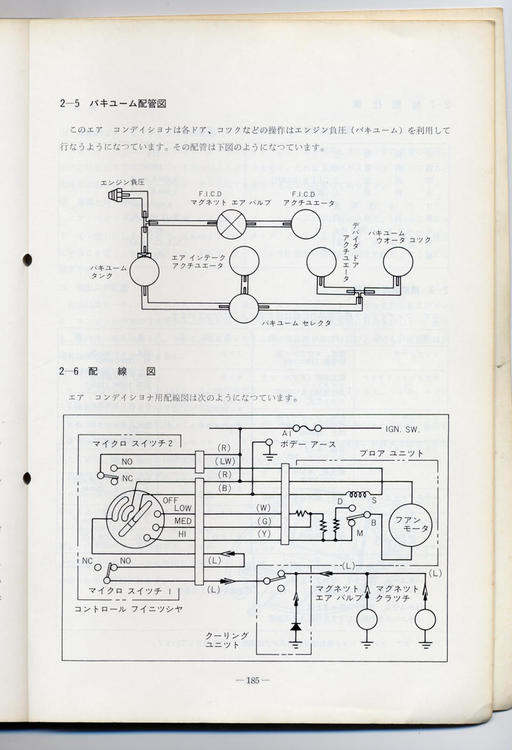Everything posted by HS30-H
-
Mint '71 240Z - More Fun Coming to BaT
Which "the" Skyline? I own a KPGC10 race car and I can tell you that its bodyshell is no stiffer than any S30-series Z bodyshell.
-
Mint '71 240Z - More Fun Coming to BaT
By the end of 1970, works-affiliated privateers with 432-Rs found themselves racing in re-jigged race classes that allowed engine capacities up to 3 litres. They promptly installed TOMEI-tuned pushrod H30 stock car engines in their 432-R bodies:
-
Mint '71 240Z - More Fun Coming to BaT
I think a 'fully loaded' '69/'70 HLS30U would struggle to make that weight in real life. I think the car used for the FIA 3023 homologation had - shall we say - a little bit of a diet before being tested... There's some talk that the FIA 3023 homologation sample car actually had a PZR body. JAF homologation of the 432-R was 960kg 'wet', so that's with 100 litre tank full. It seems to indicate the FIA 3023 car was, er, 'special'...
-
Mint '71 240Z - More Fun Coming to BaT
I think we are both reading from the same page here. The wider point is that the power values stated on the chassis tag - and in the literature, and quoted back to me by SpeedRoo in comparison with the S20 - are quantified before the other devices are bolted on, so not all L24-engined models were created equal. Edit: And I LIKE it when Canada sticks up for Canada. The "Made For USA" thing bugs me vicariously for Canada as much as anywhere else. The Kaku U team WENT TO Canada for heaven's sake!
-
Mint '71 240Z - More Fun Coming to BaT
Typo?
-
Mint '71 240Z - More Fun Coming to BaT
No smog pump/anti-emissions devices on non-North American market 240Zs, and also different distributor. I say less power on HLS30U/UN/UV. It's impossible for them all to be the single, same, factory quoted output in the field. The engines were tested 'bare', with no load. No pumps.
-
Mint '71 240Z - More Fun Coming to BaT
You're Mr "432 is nothing special" around these parts. Add it to your sig so you don't forget.
-
Mint '71 240Z - More Fun Coming to BaT
Watching the auction count down 'live' in the pub with you was a slightly surreal experience, Kats. I think we were both giggling as the numbers went up and up, right? Crazy stuff.
-
Mint '71 240Z - More Fun Coming to BaT
Two points: Firstly, Genichiro Tahara's activities were backed by Nissan and his car was a little 'warmed over'. It was essentially a factory-backed effort in disguise. If you want to go deeper into Nissan's plans and activities for racing and rallying in Japan you might want to prepare yourself for some deeper depths than you have previously dived to. Its a little bit more complex a subject than you may realise. Secondly, why do you make the distinction of "...Nissan USA with Mr K..."? This is just another example of Katayama Lore overshadowing the conversation. Nissan was Nissan. Katayama was working for Nissan, not 'Katayama USA Inc.' So NISSAN were supporting motor sports activities in the USA (and elsewhere) and you citing Katayama is just a consequence of that whole "they wanted me to fail", "I was banished" narrative which is all a bit too poor me, poor me, pour me a drink for my taste, and doesn't stand up to much scrutiny. Nissan was just as interested in motorsports activities in Japan as anywhere else, and their eyes were always on their commercial competitors in Japan. In the early 1960s that meant Toyota. Once they got into it, it became an arms race which Nissan won. But before factory team and privateer racing could take off in Japan, Japan needed to get to a tipping point; courses to race on, cars suitable to race with, people willing to spend money to watch or partake, and a useful spin-off for promotion and sales. More than that, a point where Japan could feed itself and make sure it had clean running water and a roof over its head. Japan had - make no mistake - been totally DEVASTATED by war. It therefore took longer for Japan to rebuild itself to the stage where it could feasibly engage in such fripperies as motorsports. The USA, by contrast, was enjoying a booming economy and American society had never had it so good. So pointing at your 'Mr K' as the man who was making it happen is a little fresh...
-
Mint '71 240Z - More Fun Coming to BaT
You just moved the goal posts. We were naturally restricting our comparisons to what was available on the showroom floor (hence the HP vs PS comparo) and how do you compare individual race-prepped engines without knowing to what level, what purpose, they have been prepared? Casino. Finally, how are you going to get a 2.4+litre car into a race class that is limited to 2.0 litres?
-
Mint '71 240Z - More Fun Coming to BaT
Why would you assume that development of the factory 'safety bar' kit was specific to USA safety requirements? Nissan had committed - 'early in the Z programme' - to using the S30-series Z in its own racing and rallying activities, and made sure that this was taken into account in the design & engineering of the cars. FIA and JAF homologation was very important and required an integrated effort in order to get the application in early enough for it to be legal for the start of the 1970 season. Clue: Monte Carlo. It's not in the USA:
-
Mint '71 240Z - More Fun Coming to BaT
Rhetorical questions: How were the quoted power figures tested? UK/Aus/Euro/NZ 240Z models had the L24 engine without the smog pump-equipment, had retarded timing (check out the different distributors) of the HLS30U, but power figures are all quoted as being the same. Which is correct? My money is on the HLS30U giving way less power at the wheels than the PS30, but also way less than the HS30U/HLS30. Did you miss the point about the stock package? I'm talking about the whole car. These are supposed to be sports cars. You don't win sports car Top Trumps by being less sporty.
-
Mint '71 240Z - More Fun Coming to BaT
Taking the implications of your first sentence to its logical conclusion, each North American dealer had their own version of the '240Z'. This is, of course, nonsense. I like your "same power" for the L24 vs S20. If you honestly think the retarded-timing, anti smog-equipped L24 in the HLS30U was kicking out the same as the S20 then - as we say over here - I have a bridge to sell you. It would be fun to have a theoretical race. Lets pick a race track with some corners rather than a drag strip. How about the old Watkins Glen? Or maybe Suzuka? You can have a 1970-spec HLS30U (complete with smog pump, 4-speed trans, 3.36:1 open diff, Amco towel rail bumper add-ons and rear window louvers) and I'll choose a 1970-spec PS30 (I could have chosen a PS30-SB, but I'll be nice) with its close ratio 5-speed Servo-synchro trans and 4.44:1 LSD. No gew-gaws on the 432 as - buying in Japan - the buyer gets to spec the car rather than the dealer. Lets race... Now I don't claim to be a race car driver, but I've had lessons. Hopefully I was paying attention. Don't know your pedigree, but I'm willing to bet there's a good chance that I'll lap the track faster and smoother than you will. Because its all about the PS30 package. You think different?
-
Mint '71 240Z - More Fun Coming to BaT
But how late would the planning for the smog pump system have been? It must have been planned well in advance, surely? It's a fairly complex system that has implications for several linked components, and some cost to the company.
-
Mint '71 240Z - More Fun Coming to BaT
I've long wondered - when all overheads were factored in - just how much Nissan made on each HLS30U/UN/UV in, for example, 1970. There might well have been occasions where their selling dealers were making more per-car than Nissan Japan were getting back. No doubt the dealers were happy. Maybe that was part of the thinking...? We've talked about it in the past, but I still think that at least TWO models of '240Z' would have been suitable for the North American market; One 'Hot' one, and one 'Deluxe' one. Nissan themselves could have loaded the Deluxe with all sorts of fun stuff to charge more for. Like carpets, for instance... ?
-
Mint '71 240Z - More Fun Coming to BaT
Charles, It's the RHD-specific layout as fitted to RHD production cars. Since the RHD heater/blower system (including the 'chimney' air inlet in the lower cowl part of the bodyshell) is RHD-specific and will not fit/work in LHD layout, it stands to reason that an LHD-specific version of factory aircon would be designed to fit the LHD layout. I can't show you a picture of an LHD-specific version because an LHD-specific version never made it to production in 1969... My point about the nascent air-con hose cut-outs in the firewall jute pad of the green BaT car is that - I'm willing to bet - they indicate that LHD-specific factory aircon must have been on the cards until quite late in the design/engineering processes. If not, why include the cut-out templates in the LHD-specific (it won't fit RHD) firewall jute pad? We know that there was a certain amount of de-contenting of the very first deliveries to North America, and - granted - some of the details will have been regarded as 'won't be missed', 'not necessary' or 'too expensive'. I believe there was a Tug-O'-War going on between NMC USA and NMC Japan over how to keep costs down whilst still making profit with a very competitive selling price. There were also - clearly - efforts made to simplify options and limit differences to the U/N/V variants which would help to maximise daily production volumes. I think factory aircon for North American market variants was a victim of all this. The wider point is that all the 'Made For USA' and 'Designed for USA' talk is not the whole story. Anybody who looks at these cars closely enough must realise that 'Made for Japan' and 'Designed for Japan' also happened, and so did made/designed for Australia, NZ, NL, Belgium, France, Germany, Portugal, UK, Scandinavia and others. S30, PS30, PS30-SB, HS30, HS30U, HLS30, HLS30U/UN/UV were all designed/engineered at the same time. That's why Nissan called it the 'S30-Series' at launch. It's a family.
-
Let's show vintage racing pictures. I'll start.
Its an RT55 Corona 1600GT, running in the TS-III class. DNF'd in Heat one and classified last in aggregate results after Heat two.
-
Mint '71 240Z - More Fun Coming to BaT
Fully integrated factory air conditioning was part of the 'original' design for the S30-series Z. There's a chapter on the system in the November 1969-dated Nissan 'Service Shuho' booklet. Here are scans of some selected pages: But.... "Designed For USA" / "Made For USA", right....?
-
Mint '71 240Z - More Fun Coming to BaT
AirCon. Not fitted. There's a little hole with a rubber plug in the top of the trans tunnel, under the dash. AirCon drain hole. Edited to add: S20-engined cars used same two heater hose holes as L20A/L24-engined cars. Universal. Good engineering!
-
Mint '71 240Z - More Fun Coming to BaT
No. I'm saying that - much like the guy on BaT who was under the impression that Katayama designed and personally specified 'the 240Z' - they are not necessarily as well informed as they would ideally be. I was watching the BaT auction, following the comments, and it brought it home to me that people you *might* think would be fairly well informed about these cars (you know, like people who profess to own more than 30 of them...) are either dismally ill-informed or just plain lazy. Maybe they have been led somewhat astray by the type of articles you linked to. I think the "American Car, Made In Japan" narrative does not help matters. If people want to own these cars and just drive them, that's fine. They can hang 'em on the wall and just look at them, and that too is fine. But if people want to pipe up and tell us all that headlamp covers were "only aftermarket" then they had better be right, right? And when somebody attempts to straighten that out with a little perspective and hard data, but gets 'flagged as unconstructive' and deleted because three or four people don't like it, that's wrong - right? It strikes me - once again - that there's a deeper discussion to be had, and more research to be done, on how the HLS30U, HLS30UN and HLS30UV variants came to be set in the specification that they were finally sold in. This is something not covered in any depth in Uemura san's book and I believe it would be interesting and educational to get more deeply into. Personally I find it interesting and educational to look at and compare different market variants that were made around the same time period, but some are telling us that's "irrelevant" because "Made For USA"...
-
Mint '71 240Z - More Fun Coming to BaT
Thanks. It's in such good condition in the green BaT auction car* that it looks just like the textured finish of the injection-moulded plastic on the choke/hand throttle mount. Amazing! *Hey, we haven't got a catchy name for it yet, have we? Lstepp4Re's idea to name it didn't fly, did it? He's got "Frankie" The Franklin Mint Cartm. Do I remember him calling this one "Goldie" or "Greenie" or something like that, or did I have too much cheese before bed last night? '310' isn't cutting it for me. That one is already taken.
-
Mint '71 240Z - More Fun Coming to BaT
It was a Nissan product, not a Katayama product. Personally I would congratulate ALL the people at Nissan - even the guys who swept the floor and the ladies in the staff canteens - for doing their bit, however small, in making great products. And I would include everyone at Nissan Shatai, as well as all the component manufactures at companies like Niles, Koito, Toshiba, Yuasa, Mitsubishi, Ampco, Tokico, Everwing, IKI, Izumi, Bridgestone and any number of other companies who were making parts which were small pieces in the jigsaw puzzle which made these - and other - fine cars. I've been lucky and privileged enough to meet some of that generation of people who made these cars - some of them parents and relatives of good friends - and I am full of admiration for their work. I'd rather thank all of them than just one man.
-
Mint '71 240Z - More Fun Coming to BaT
SCCN = Sports Car Club of Nissan TMSC = Toyota Motor Sports Club PMC-S = Prince Motorist Club Sports etc These are all manufacturer-linked racing club organisations. SCCJ was different because it was a national racing club organisation, and not single-brand affiliated.
-
Mint '71 240Z - More Fun Coming to BaT
I chose Kawazoe (I could easily have thrown Soichiro Honda into the ring) because Kawazoe was working RIGHT NEXT to Katayama, was a qualified engineer, and - in answer to your preposterous (Katayama) "knew Americans and America" (when he'd had a wander around for a few days while his ship was in port?) - Kawazoe had graduated from the University of Dayton with a B.S. in Mech. Engineering and from M.I.T. with an M.S. He was a key player in the success of the company. He was fluent in English, knew plenty about America and Americans (as well as plenty about China, having been a POW there for 8 years) and knew how to make and repair cars and trucks - especially GM and Ford products. Katayama, in contrast, knew how to sell stuff. He was - clearly - very good at selling 'Mr K.'... Most of the things you put in your list were not the sole responsibility of one man, and yet you credit him with them. I originally asked "what exactly are we crediting Katayama san with?" in relation to the S30-series Z (transl. "the 240Z"). How was the fabric and detail of HLS30U/HLS30UN/HLS30UV variants influenced DIRECTLY by Katayama? Did he choose the gear ratios? Did he choose the spring and damper rates? Did he choose the seat fabric colours? Exterior paint colours? Did he tell Nissan not to bother offering fully integrated factory aircon? Why is it "thanks Mr K.!" and not "thanks everyone at Nissan"?
-
Mint '71 240Z - More Fun Coming to BaT
This particular example looks a bit more professional than that.









